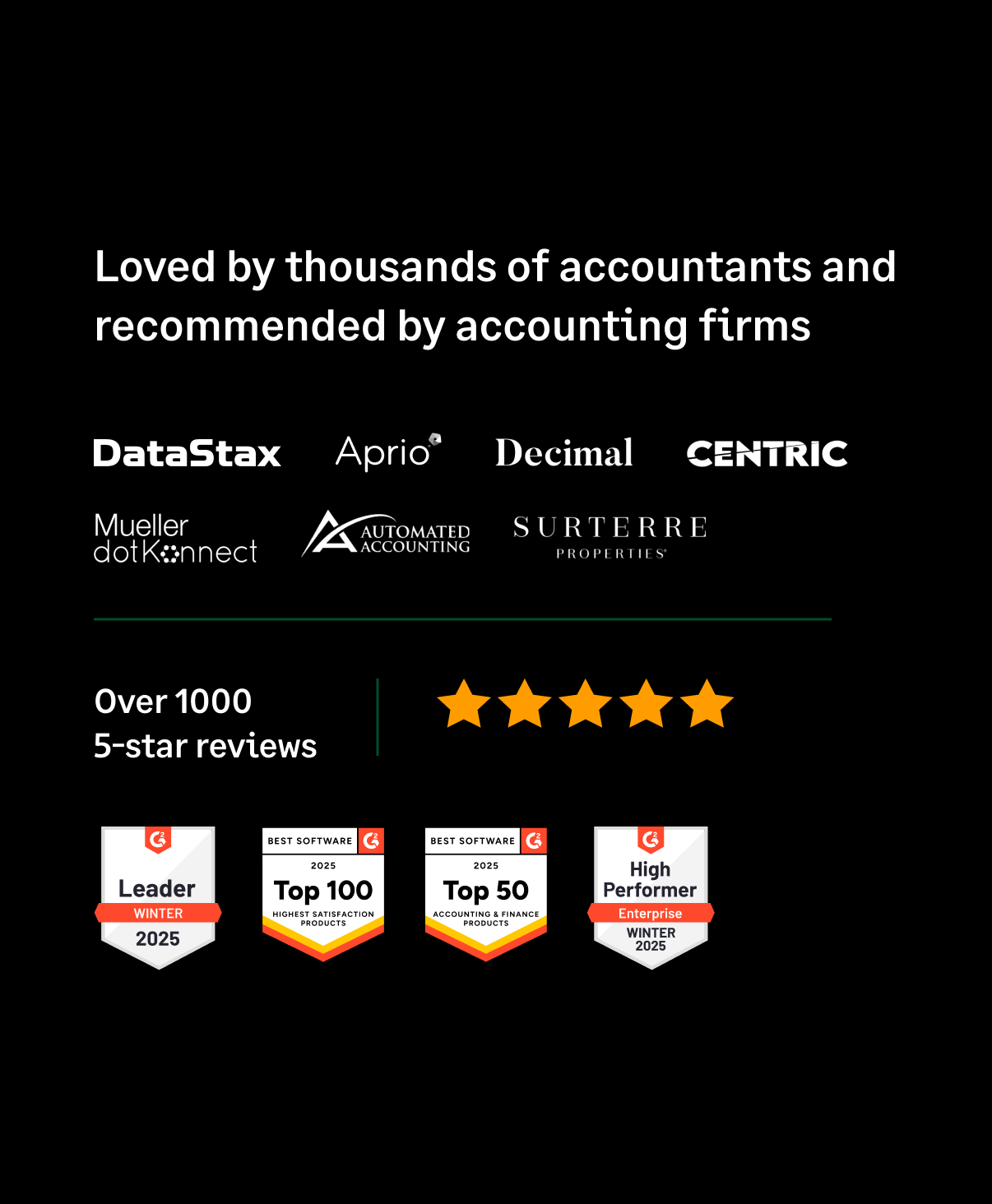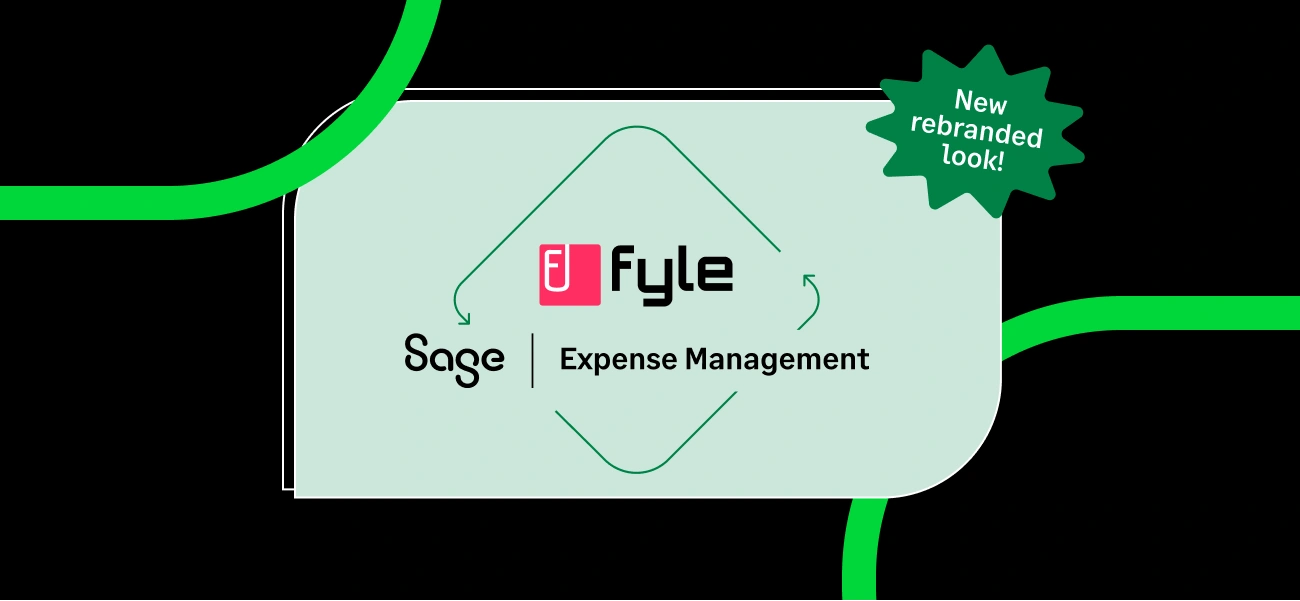Managing travel expense reimbursements is a crucial aspect for businesses that require employees to travel for work. Ensuring clarity on what can be reimbursed, how it should be reported, and staying compliant with IRS rules can prevent misunderstandings and streamline your financial processes.
In this guide, we’ll walk through everything you need to know about travel expense reimbursement, from defining reimbursable expenses to how tools like Sage Expense Management (formerly Fyle) can simplify the entire process.
What Is Travel Expense Reimbursement?

Travel expense reimbursement refers to the process through which businesses compensate employees for any reasonable and necessary expenses they incur while traveling for work.
These expenses typically include transportation, meals, lodging, and other travel-related costs.
By having a clear travel reimbursement policy in place, companies can avoid confusion and ensure that employees are fairly compensated for legitimate business expenses while traveling.
What Travel Expenses Can You Reimburse?
You can reimburse employees for ordinary and necessary expenses incurred when traveling away from home on business. The type of expenses you can reimburse largely depends on the nature of the trip and the specific policies of your organization.
Here’s a breakdown of reimbursable travel expenses:
- Transportation: This includes airfare, train, bus, or car expenses incurred while traveling between your home and business destination. For example, if you fly from New York to Chicago for a business meeting, the cost of your flight is reimbursable. If you travel by car, you can either claim actual expenses (like gas and tolls) or use the IRS standard mileage rate.
- Lodging: Hotel stays are reimbursable, but be sure to define limits on nightly rates. For instance, if a hotel room costs $250 per night in a major city, but your company has set a maximum reimbursement limit of $200, the employee may only claim up to the $200 limit.
- Meals (non-entertainment related): You can reimburse meals if the trip is long enough to require rest or an overnight stay. This includes food, beverages, and related tips.
- Local Transportation: Employees can claim expenses like taxi or rideshare fares, or car rentals used to travel between their hotel, business meetings, or client sites.
- Miscellaneous expenses: These include necessary expenses like baggage fees, laundry for extended trips, and business phone calls.
Example
Let’s say an employee drives from Dallas to a business conference in Houston, staying at a hotel overnight. The employee incurs gas expenses of $60, pays $150 per night for lodging, and spends $40 on meals.
The company will reimburse the employee for the mileage rate equivalent to $60 for gas, $150 for the hotel, and 50% of the meal cost, which comes to $20 (as meals are subject to a 50% deduction limit).
However, if the employee brings a spouse on the trip and books a larger hotel room, only the portion of the expense applicable to the employee’s travel would be reimbursable.
IRS Rules Around Travel Reimbursements
The IRS has clear guidelines to help businesses manage travel reimbursements and ensure compliance with tax regulations.
Following these rules not only helps businesses stay compliant, but also prevents issues during audits, and ensures employees are reimbursed for legitimate business expenses.
Here’s a closer look at the key IRS rules businesses should follow:
Actual Cost vs Standard Meal Allowance

Employees can claim the actual cost of their meals, but they must keep detailed records and receipts for each expense. This method is more accurate but requires thorough documentation, which can be time-consuming for both the employee and the employer.
Standard Meal Allowance Method
The IRS also offers a simplified approach called the “standard meal allowance.” Instead of itemizing meal expenses, employees can claim a set per diem amount of meals and incidental expenses (M&IE).
For instance, in 2025, the standard meal allowance is $68 per day for most U.S. locations. This method reduces the need for keeping meal receipts and simplifies the reimbursement process.
Who can use it?
The standard meal allowance can be used by both employees and self-employed individuals, regardless of whether their travel expenses are reimbursed.
Benefits
The set rate is easy to use and provides a consistent approach across multiple trips. However, it may not fully cover actual costs in expense locations.
Travel Inside the U.S.
For business travel within the U.S., businesses can generally deduct the full amount of business-related travel expenses. These include transportation (airfare, car rental, etc.), lodging, and meals (subject to the 50% limitation on meals). More on the 50% limit later.
Personal Activities During Business Travel
If an employee combines business travel with personal activities (e.g., a vacation), only the expenses related to business can be reimbursed. Personal expenses, such as sightseeing tours or meals during non-business days, are not deductible.
Example: An employee travels to Los Angeles for a 5-day business conference but decides to stay an extra 3 days for personal vacation. The company can only reimburse travel, lodging, and meal expenses for the 5 business days. The costs incurred during the 3 vacation days are personal and not reimbursable.
Multi-Purpose Trips
If the purpose of the trip is primarily personal, with only a minor business component, the trip’s travel expenses cannot be reimbursed as business-related costs.
Travel Outside the U.S.
The IRS imposes more stringent rules on international business travel, especially when the trip mixes business with personal activities. If a portion of the trip involves non-business activities, only part of the travel expenses can be deducted.
Primary Purpose of Travel
If the primary purpose of the trip is business, the cost of getting to and from the destination is fully deductible. If the trip is mainly for personal purposes, even if some business activities are conducted, travel expenses are not deductible.
Allocation of Costs
For mixed-purpose trips, businesses need to allocate costs between business-related and personal expenses. Only the portion related to business can be reimbursed or deducted.
Example: An employee flies to London for a week-long business meeting but spends 3 extra days vacationing in Paris. The cost of the airfare to and from London can be deducted, but the cost of traveling to and staying in Paris is personal and not reimbursable.

Conventions and Business Meetings
Expenses related to attending business-related conventions or meetings can be reimbursed. However, certain conditions apply:
Business Purpose
The convention must directly relate to the employee’s job or the business’s operations. For instance, attending an industry-specific conference that offers skill development or business insights would qualify.
Family Members
If an employee brings a family member (such as a spouse or child), their travel expenses are not deductible unless the family member is also an employee with a bona fide business purpose for attending.
Example: If an employee travels to a technology conference in New York and brings their spouse, the company can reimburse the employee’s flight and hotel costs, but the spouse’s expenses (e.g., additional airfare and meals) are not reimbursable unless the spouse has a legitimate business role in the trip.
Meals and Entertainment

The IRS has specific rules on the deductibility of meals and entertainment expenses. Changes in recent years have tightened the ability to deduct entertainment-related costs.
Meals
Businesses can deduct 50% of the cost of meals, provided they meet the following conditions:
- The meal is directly related to business or associated with a business activity.
- The meal is not lavish or extravagant under the circumstances.
- The employer (or their employee) is present during the meal.
Example: If an employee takes a client out for lunch during a business meeting, the company can deduct 50% of the meal cost.
Entertainment
Since 2018, the IRS has disallowed deductions for most entertainment expenses. This includes costs associated with attending concerts, sporting events, or other recreational activities.
However, businesses can still deduct 50% of the cost of meals provided at such events as long as they meet the IRS criteria for a business meal.
Exceptions to the Entertainment Rule
Some specific types of entertainment-related expenses are still deductible, including:
- Entertainment Treated as Compensation: If the company treats entertainment as employee compensation (e.g., company-provided tickets to a sporting event that are included in an employee’s taxable wages), these expenses may still be deductible.
- Employee Events: Recreational expenses for employee-only events, such as holiday parties or company picnics, are fully deductible.
Recordkeeping and Documentation
The IRS requires businesses to maintain adequate records of travel-related expenses. Proper documentation ensures compliance with IRS rules and helps businesses defend their deductions during audits.
Receipts
For expenses over $75, businesses must maintain receipts or other documentary evidence (e.g., hotel bills and flight itineraries). However, small expenses (under $75) and certain transportation costs may not require receipts.
Records Must Include
- The amount, date, and place of the expense.
- The business purpose of the expense.
- The name and title of the individuals involved in the business meal or meeting (for meals and entertainment).
For more information, please refer to IRS Publication 463 (2023), Travel, Gift, and Car Expenses
How Can You Create a Travel Reimbursement Policy?
A well-defined travel reimbursement policy clarifies what expenses your company will reimburse and sets clear expectations for employees. This ensures responsible spending and simplifies the reimbursement process. Here’s how to create one:
Define Reimbursable Expenses
Start by specifying which types of expenses are reimbursable. Common categories include:
- Business travel: Clarify what transportation, meals, and lodging costs you will cover. Include limits, like mileage rates or daily allowances for meals.
- Business entertainment: If you reimburse entertainment expenses, such as meals with clients, outline the justification required.
- Other business expenses: List professional development, home office supplies, or other expenses that may be reimbursable, along with any spending limits.
Accountable vs Non-Accountable Plans
- Accountable Plan: Under this IRS-compliant plan, employees must report expenses with receipts and return excess reimbursements. The advantage is that reimbursements are not taxable for employees.
- Non-Accountable Plan: This plan doesn't require detailed reporting, but the reimbursement is considered taxable income for employees.
Expense Reporting Procedure
- Method: Specify how employees should submit expense reports (paper forms, spreadsheets, or expense software).
- Documentation: Require valid proof (e.g., receipts) for each expense type.
- Deadlines: Set clear deadlines (e.g., submit reports within 14 days of a trip).
Communication and Enforcement
- Employee Education: Ensure employees are aware of the policy through regular training.
- Approval Process: Define who can approve expenses based on the amount.
- Consequences: Detail potential penalties for violating the policy, such as non-reimbursement or disciplinary action.
Do I Need Receipts to Reimburse an Employee?
Generally, businesses require receipts to substantiate travel expenses. However, there are exceptions:
- Small Expenses: Receipts aren’t required for expenses under $75 or for transportation expenses where receipts are not readily available.
- Per Diem Allowance: If employees are reimbursed via a per diem (standard daily rate for meals and lodging), they do not need submit receipts for those expenses.
Employees should keep detailed records of expenses, including the date, amount, and purpose of each expenditure, even if receipts are not needed.
Are Travel Reimbursements Taxable?
Most travel reimbursements under an accountable plan are non-taxable. This means that if employees properly account for their expenses and return excess reimbursements, the company does not have to report these amounts as income, and employees do not pay taxes on them.
Under a non-accountable plan, reimbursements are considered taxable income. In this case, the company would include the reimbursement amount on the employee’s W-2, and the employee would pay taxes on it.
How Sage Expense Management Can Help with Travel Reimbursements

Sage Expense Management provides a powerful solution to simplify and streamline the travel reimbursement process. Here's how:
- Real-Time Credit Card Feeds: Employees are notified instantly when business credit cards are swiped. Receipts can be submitted via text message, making reconciliation automatic and efficient.
- Track Receipts: Employees can submit receipts using text message, the mobile app, Gmail/Outlook, or even Slack.
- Mileage and Per Diem Tracking: It enables accurate mileage and per diem tracking, accommodating different currencies, employee levels, and locations.
- TravelPerk Integration: It integrates seamlessly with TravelPerk to reconcile trip-related expenses and automate travel expense reporting.
- Virtual Cards for Travel: Businesses can issue American Express virtual cards for employee travel expenses, ensuring real-time spending tracking.
- Real-Time Compliance: Its system automatically monitors and enforces compliance, ensuring that all expenses meet policy standards before reimbursement.
- Direct Reimbursement via ACH: It supports direct reimbursements via ACH, streamlining payments to employees.




.webp)
















